Abstract
1. The strategy of accurate movement of the human thumb has been studied in nine subjects. An open-loop hypothesis, which states that a new final position is defined by re-setting the agonist/antagonist spring constants, was tested
2. Subjects were trained to flex the top joint of the thumb rapidly through 20 deg in about a third of a second from a fixed starting position against a load. Occasionally, and unpredictably, the viscous friction of the load was altered prior to it's being moved. The spring hypothesis predicts that such a change in load should have no effect on final position accuracy.
3. Under normal conditions no final position error developed when the viscous friction was increased. A small overshoot occurred when the viscous friction was decreased.
4. The electromyogram recorded from surface electrodes over the belly of flexor pollicis longus in the forearm revealed an increase in activity in response to an increase in viscous friction and a decrease in activity when the viscous friction was reduced.
5. When the joint and cutaneous afferents from the thumb were anaesthetized, the e.m.g. response to a change in viscous friction was severely attenuated and consistent final position errors developed.
6. Even though the compensatory open-loop muscle properties went some way towards maintaining accuracy, the change in final position error that occurred as a result of thumb anaesthesia correlated well (r = 0·84) with the amount of muscle e.m.g. response that was lost.
7. The latency of the e.m.g. response to a change in viscous friction was compared to that of a voluntary response by asking the subject to push down or let go upon perception of the load change. Approximately the first 100 ms of the e.m.g. response was unaffected by the voluntary intervention of the subject.
8. We conclude that the spring hypothesis does not explain human thumb movement. It is argued that the long-latency stretch reflex machinery is responsible for some automatic compensation for unexpected interference with movement.
Full text
PDF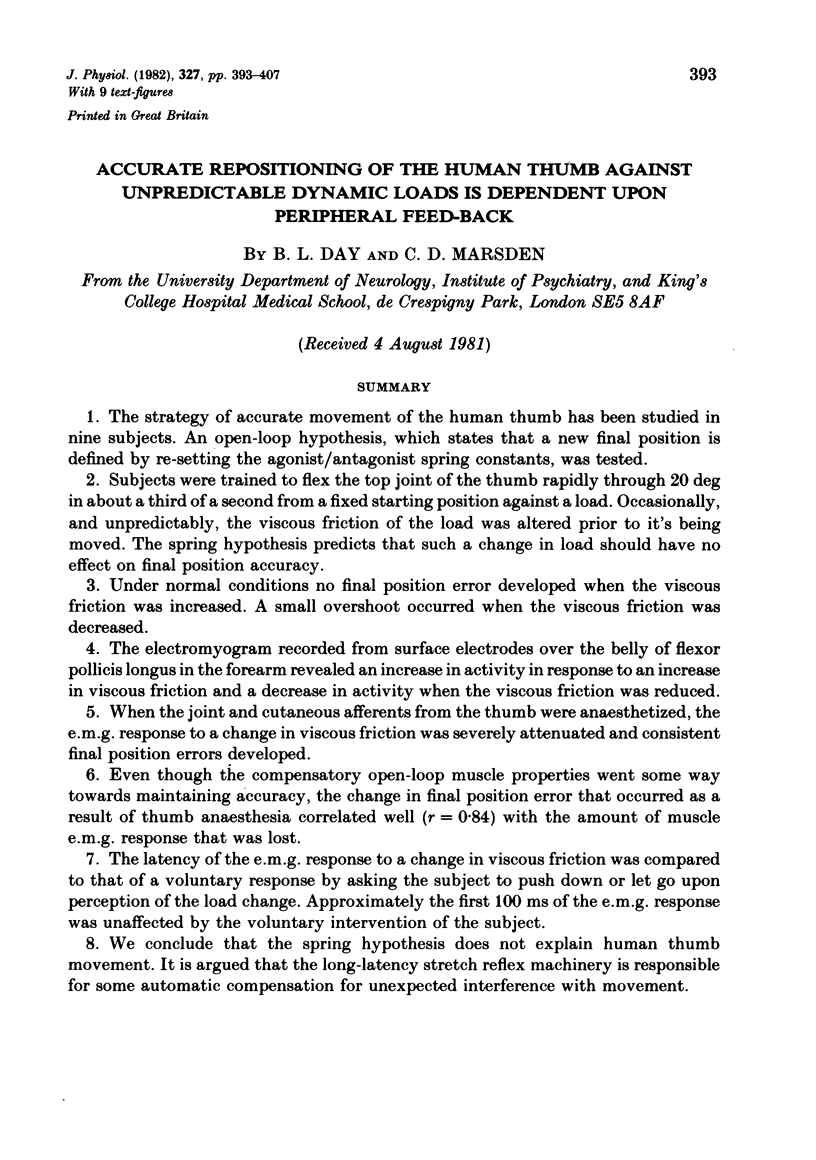
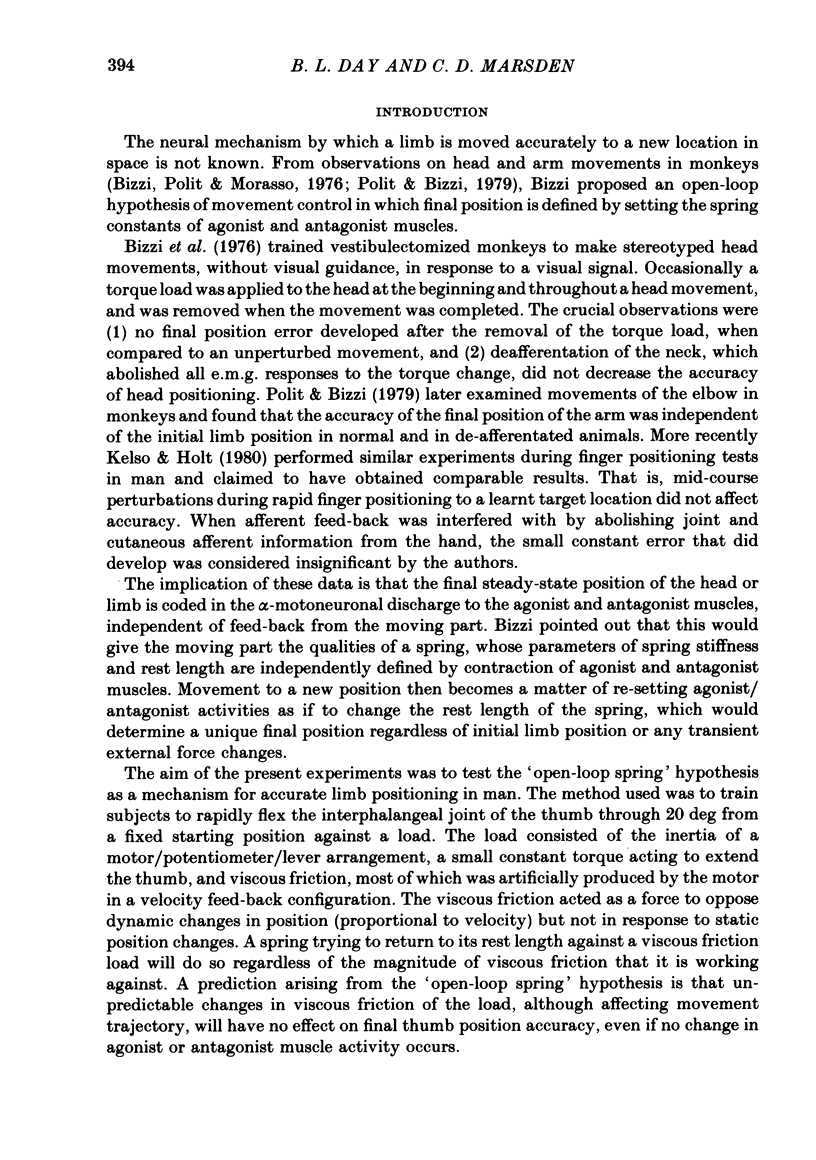
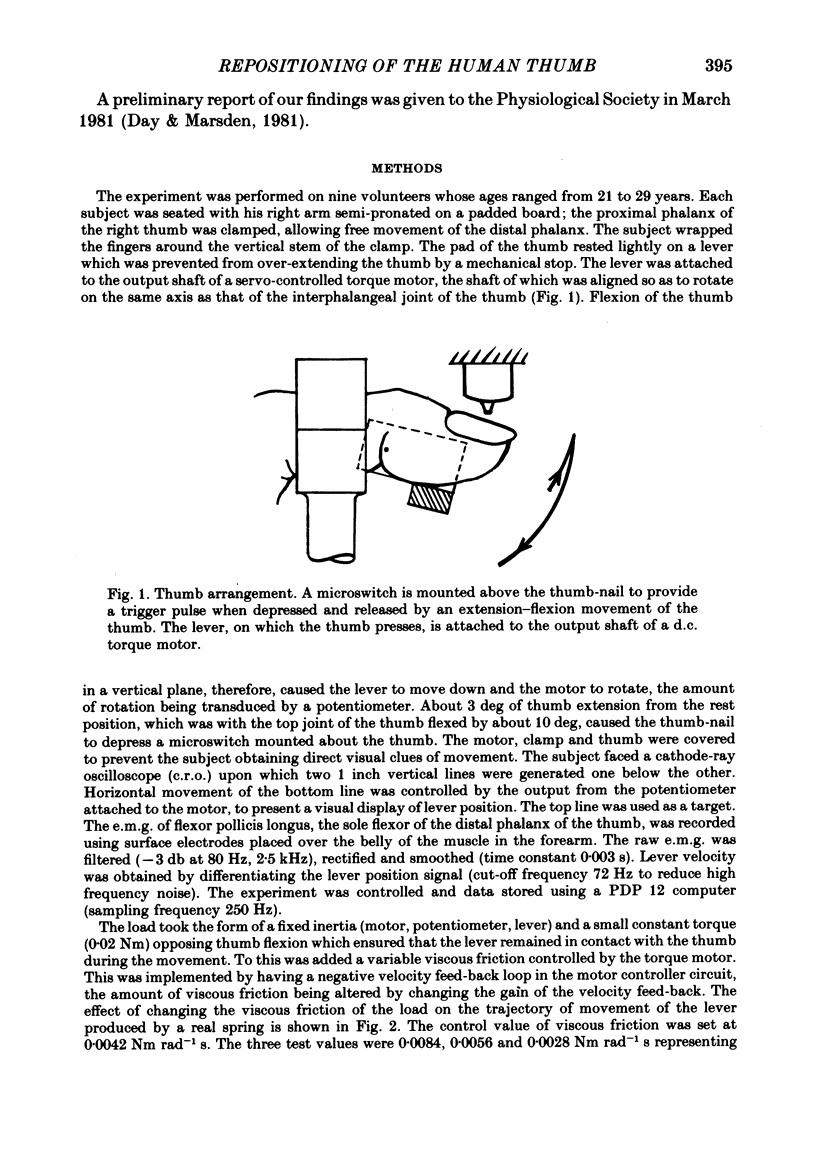
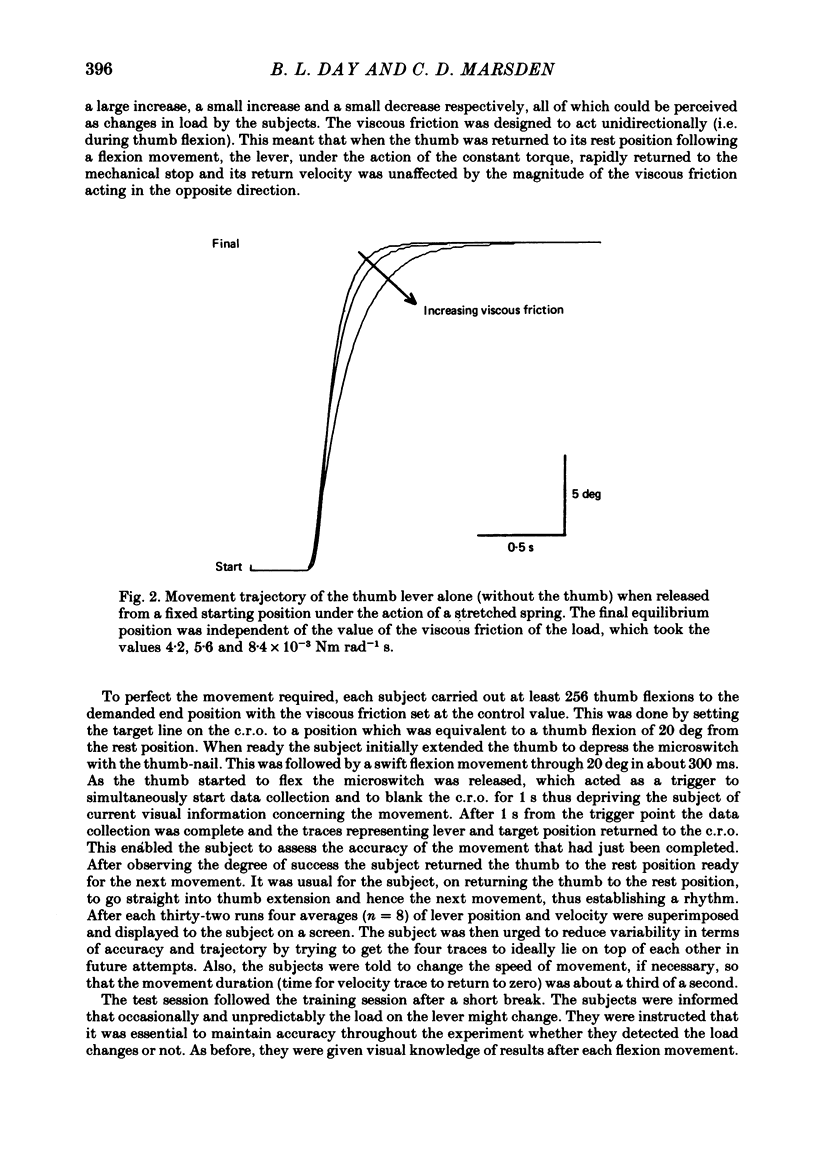
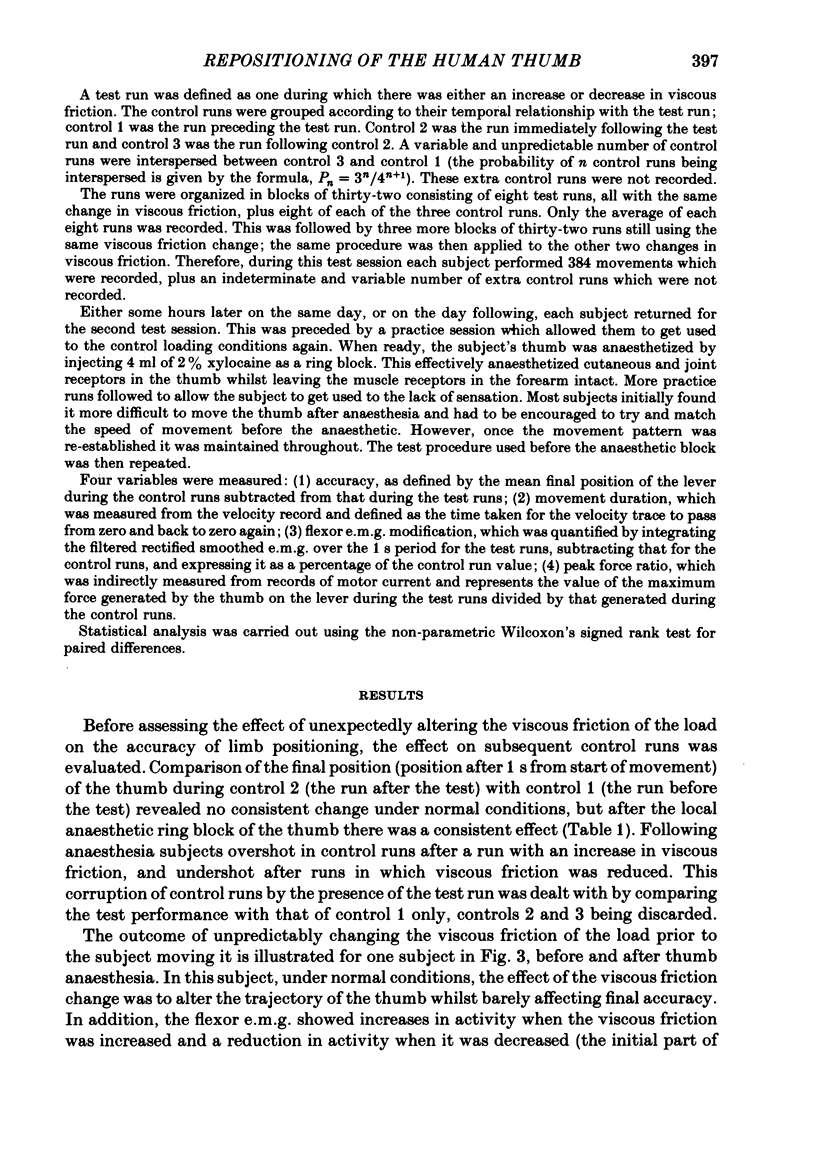
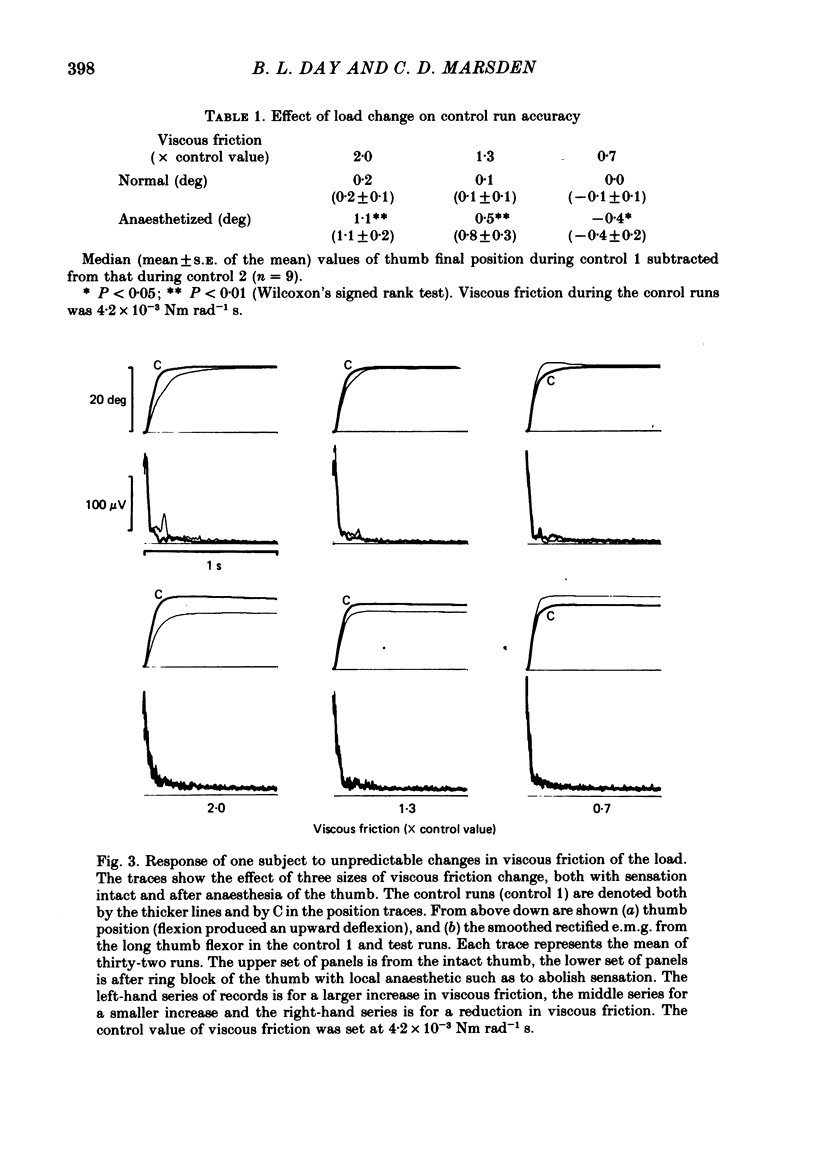
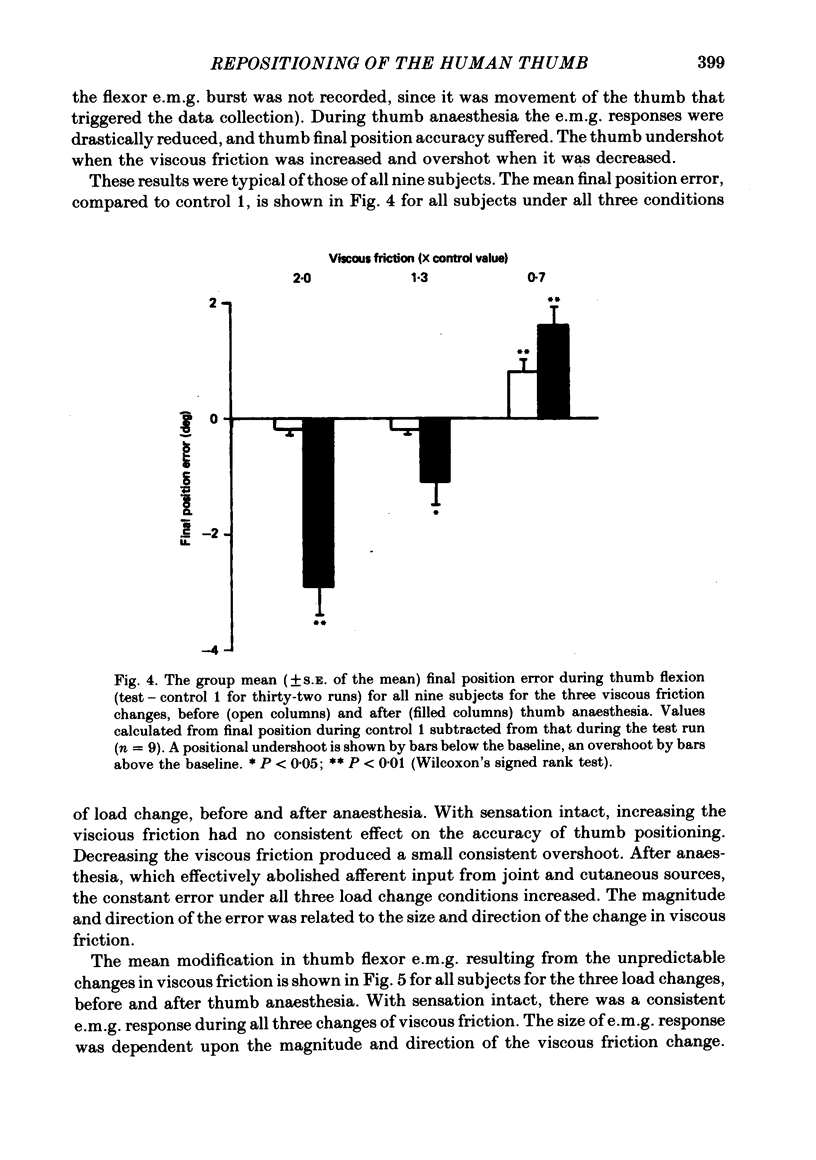
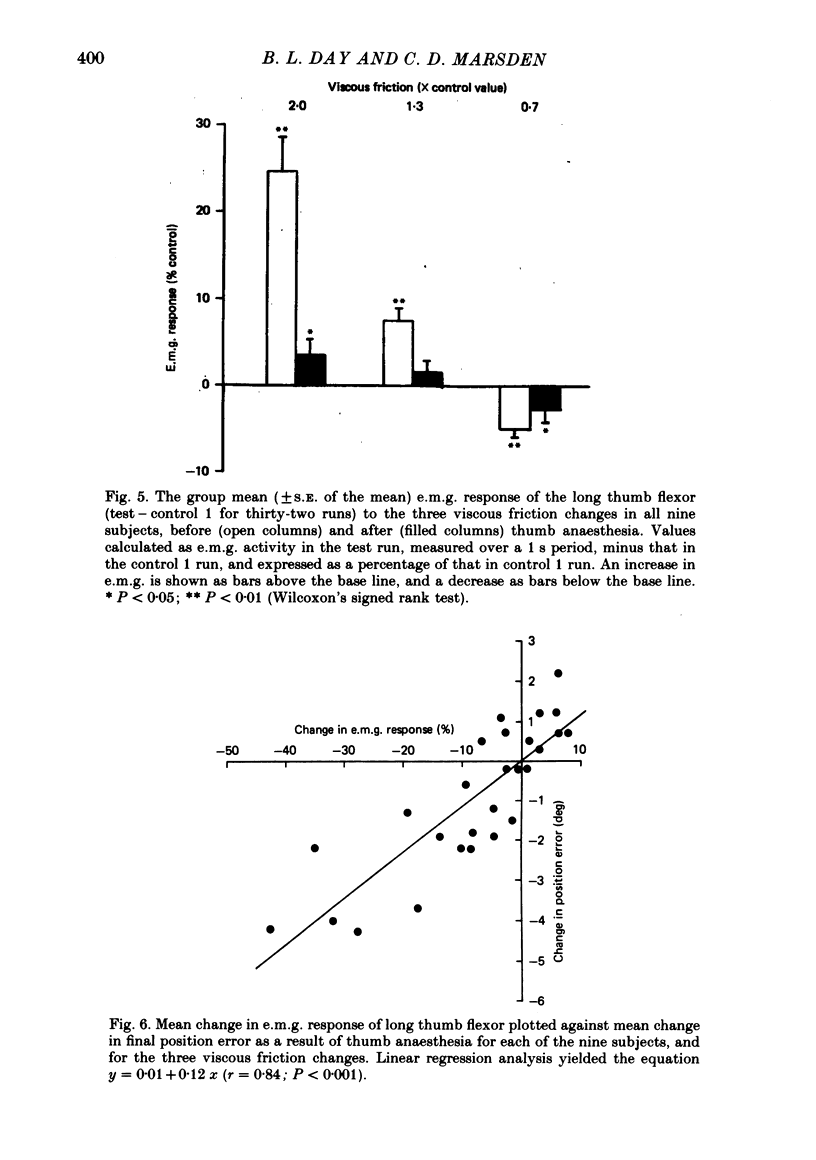
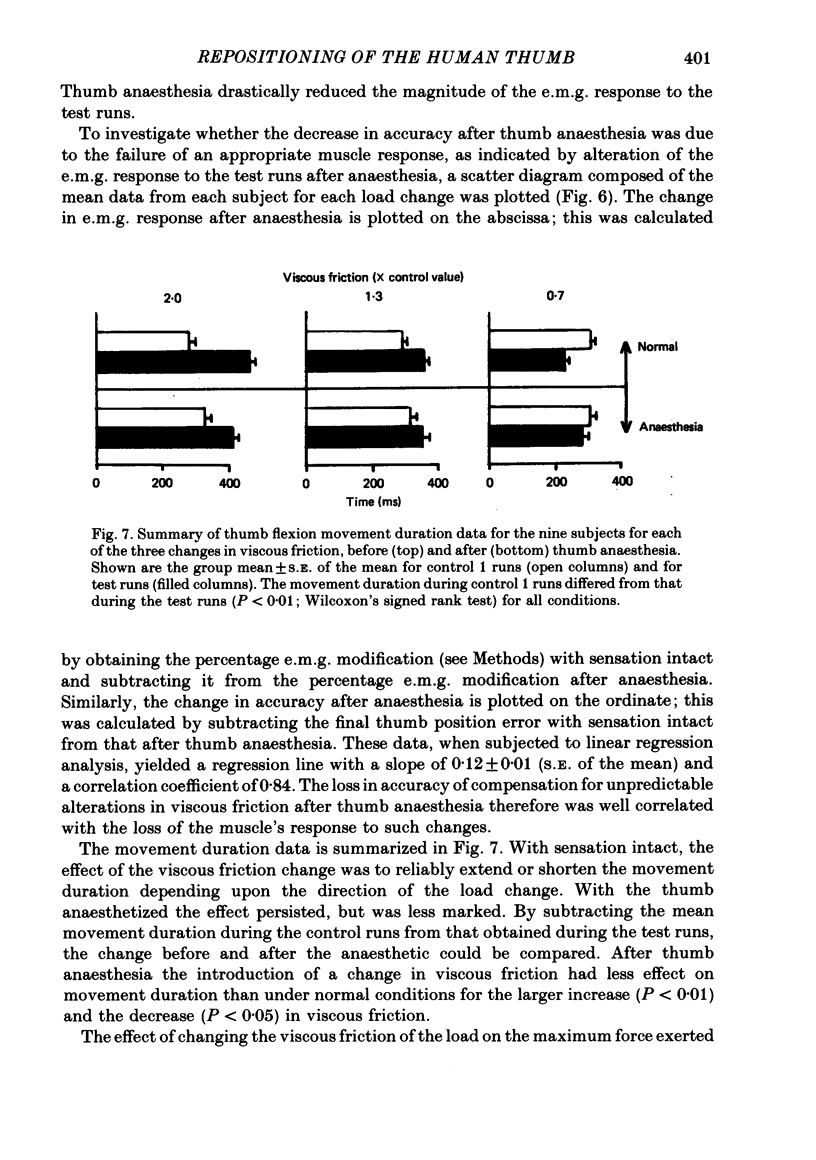
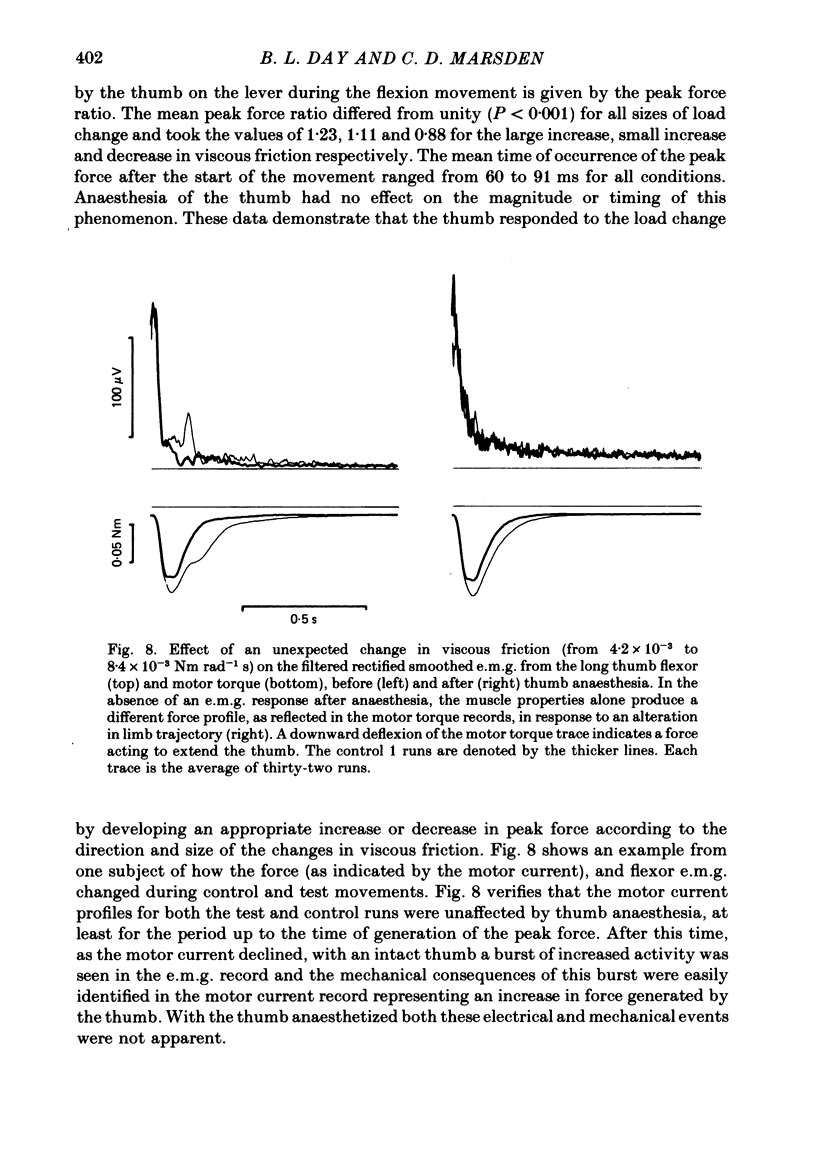
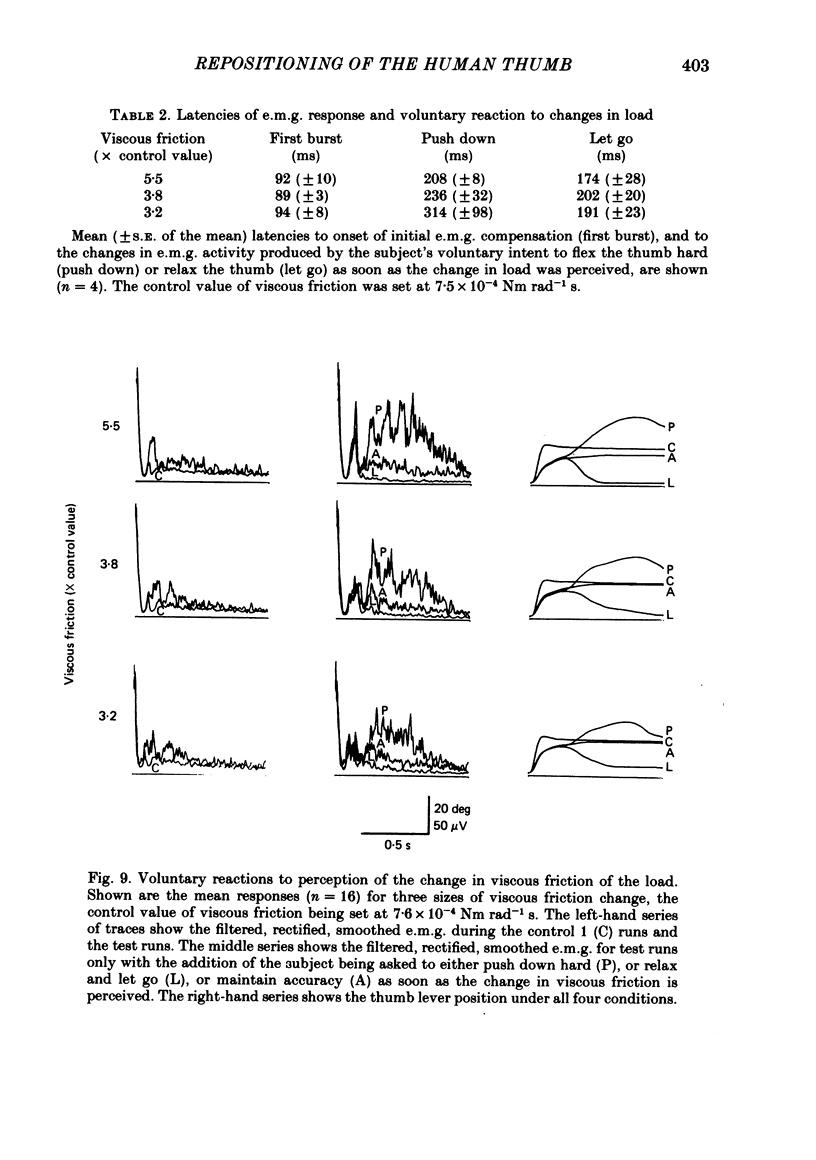
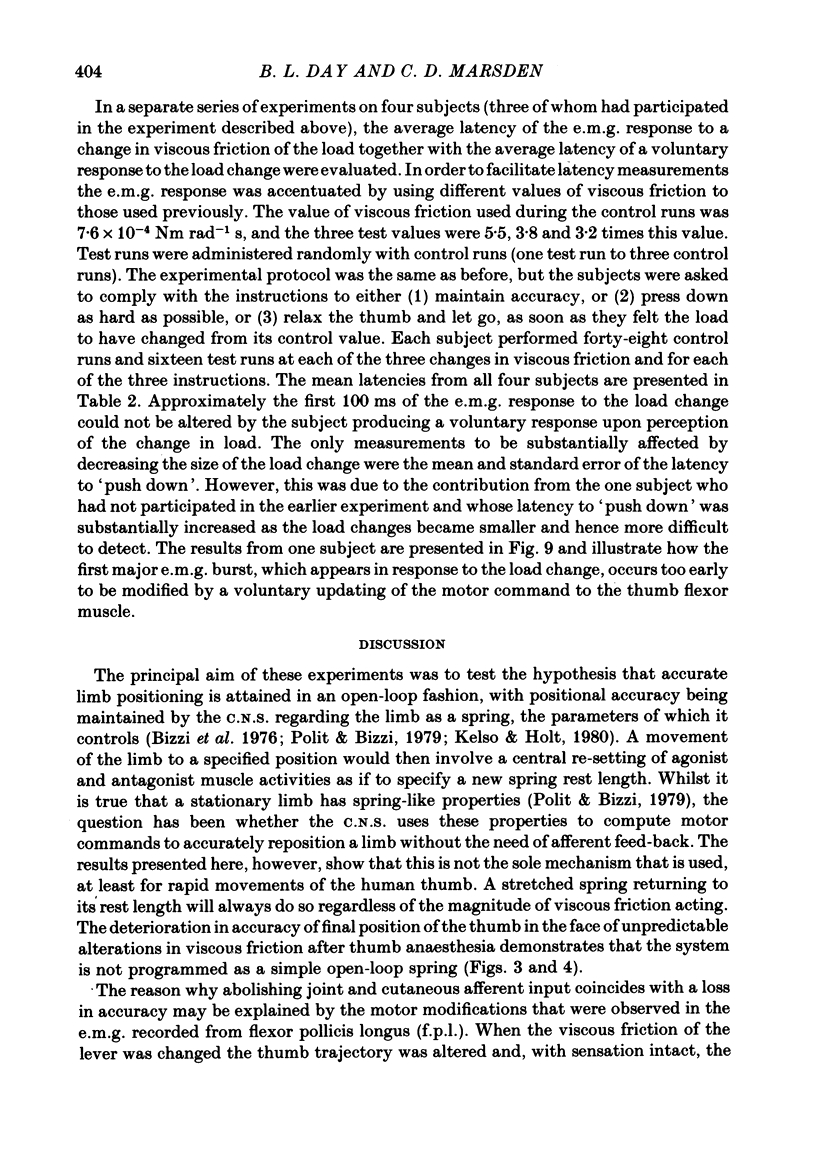
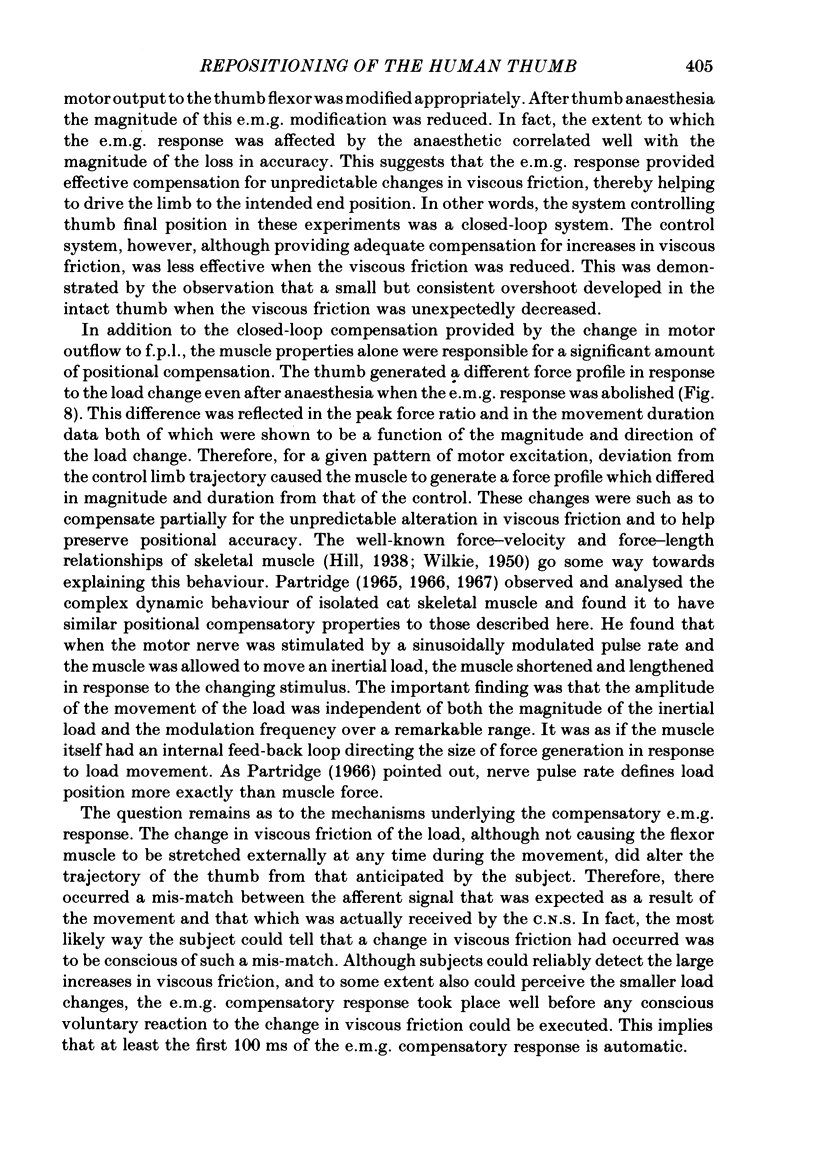
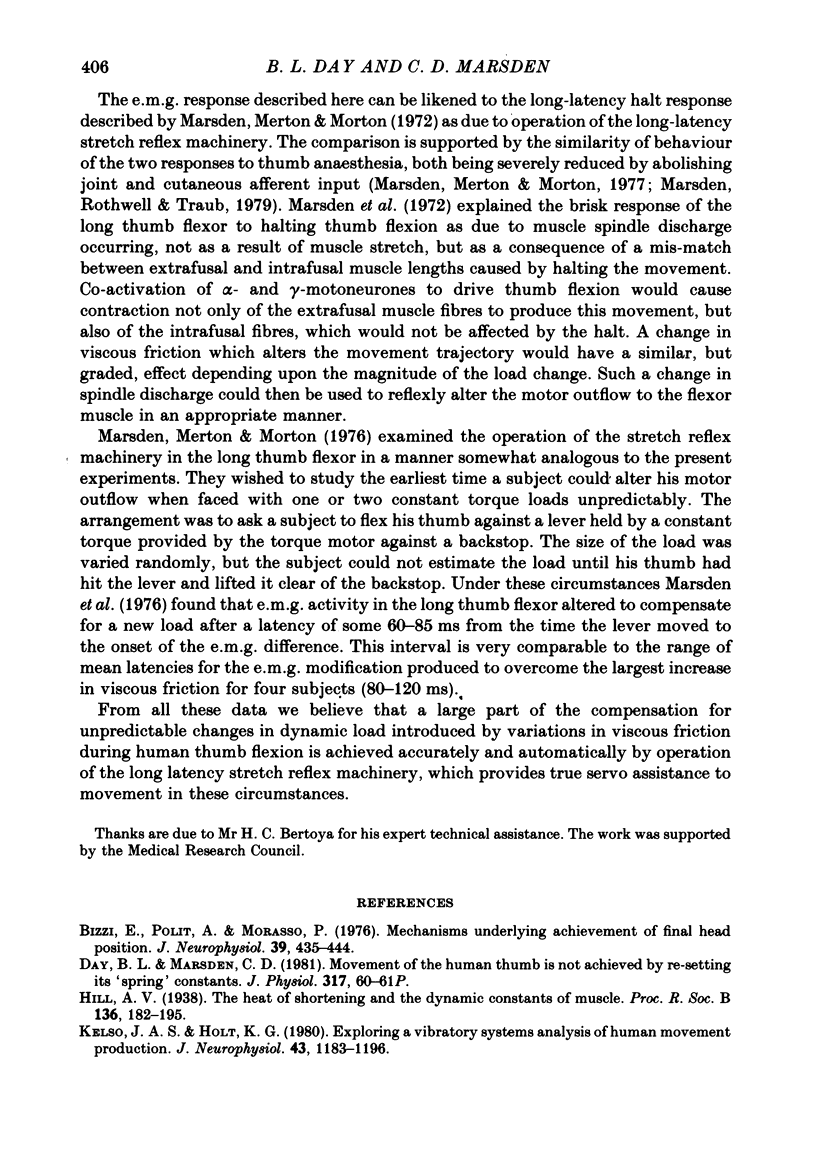
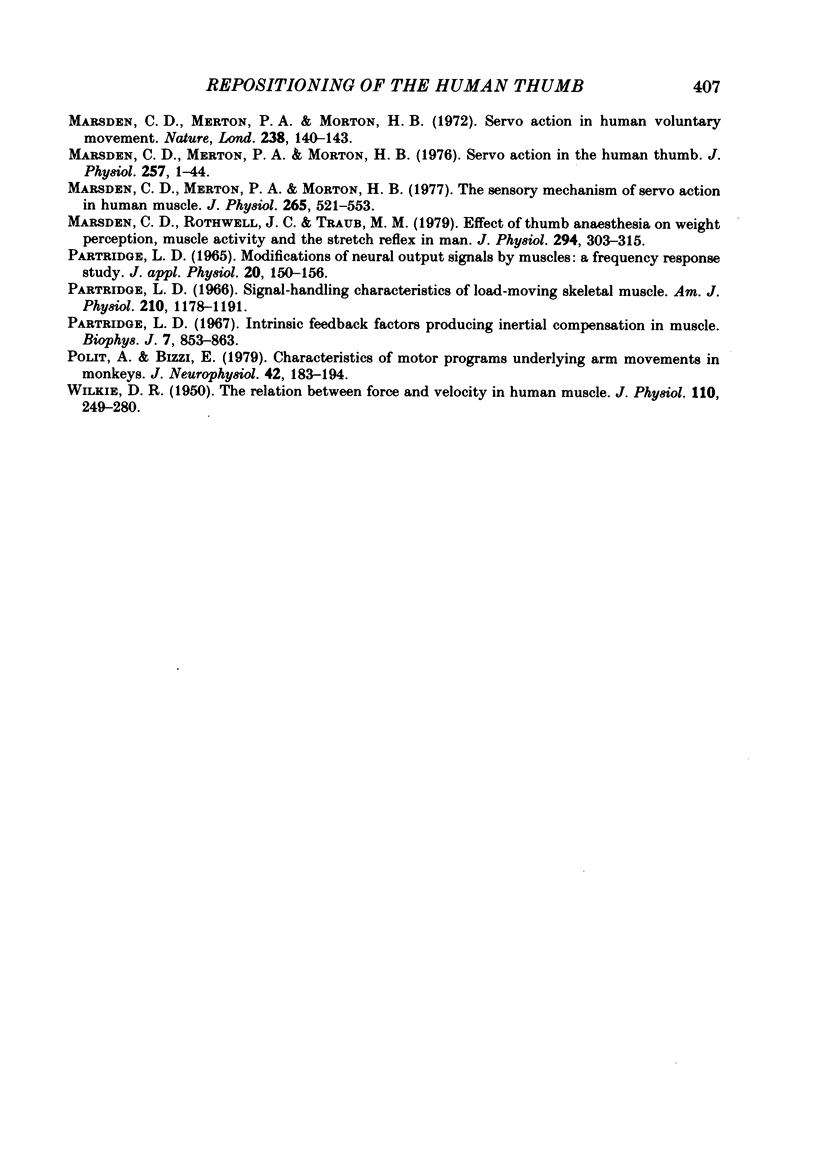
Selected References
These references are in PubMed. This may not be the complete list of references from this article.
- Bizzi E., Polit A., Morasso P. Mechanisms underlying achievement of final head position. J Neurophysiol. 1976 Mar;39(2):435–444. doi: 10.1152/jn.1976.39.2.435. [DOI] [PubMed] [Google Scholar]
- Kelso J. A., Holt K. G. Exploring a vibratory systems analysis of human movement production. J Neurophysiol. 1980 May;43(5):1183–1196. doi: 10.1152/jn.1980.43.5.1183. [DOI] [PubMed] [Google Scholar]
- Marsden C. D., Merton P. A., Morton H. B. Servo action in human voluntary movement. Nature. 1972 Jul 21;238(5360):140–143. doi: 10.1038/238140a0. [DOI] [PubMed] [Google Scholar]
- Marsden C. D., Merton P. A., Morton H. B. Servo action in the human thumb. J Physiol. 1976 May;257(1):1–44. doi: 10.1113/jphysiol.1976.sp011354. [DOI] [PMC free article] [PubMed] [Google Scholar]
- Marsden C. D., Merton P. A., Morton H. B. The sensory mechanism of servo action in human muscle. J Physiol. 1977 Feb;265(2):521–535. doi: 10.1113/jphysiol.1977.sp011728. [DOI] [PMC free article] [PubMed] [Google Scholar]
- Marsden C. D., Rothwell J. C., Traub M. M. Effect of thumb anaesthesia on weight perception, muscle activity and the stretch reflex in man. J Physiol. 1979 Sep;294:303–315. doi: 10.1113/jphysiol.1979.sp012931. [DOI] [PMC free article] [PubMed] [Google Scholar]
- PARTRIDGE L. D. MODIFICATIONS OF NEURAL OUTPUT SIGNALS BY MUSCLES: A FREQUENCY RESPONSE STUDY. J Appl Physiol. 1965 Jan;20:150–156. doi: 10.1152/jappl.1965.20.1.150. [DOI] [PubMed] [Google Scholar]
- Partridge L. D. Intrinsic feedback factors producing inertial compensation in muscle. Biophys J. 2008 Dec 31;7(6):853–863. doi: 10.1016/S0006-3495(67)86625-6. [DOI] [PMC free article] [PubMed] [Google Scholar]
- Partridge L. D. Signal-handling characteristics of load-moving skeletal muscle. Am J Physiol. 1966 May;210(5):1178–1191. doi: 10.1152/ajplegacy.1966.210.5.1178. [DOI] [PubMed] [Google Scholar]
- Polit A., Bizzi E. Characteristics of motor programs underlying arm movements in monkeys. J Neurophysiol. 1979 Jan;42(1 Pt 1):183–194. doi: 10.1152/jn.1979.42.1.183. [DOI] [PubMed] [Google Scholar]
- WILKIE D. R. The relation between force and velocity in human muscle. J Physiol. 1949 Dec;110(3-4):249–280. doi: 10.1113/jphysiol.1949.sp004437. [DOI] [PMC free article] [PubMed] [Google Scholar]


